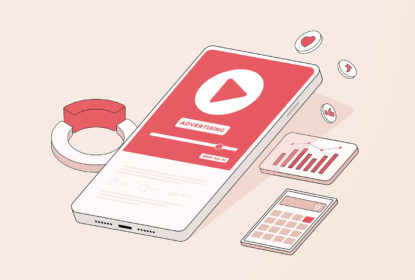If you want a fast way to bring potential customers to your website, paid advertising is a promising solution. Investing in a paid campaign “turns on the faucet” to create a steady stream of visitors who click on your ads.
Many business owners know they can benefit from paid advertising. But they don’t know where to start. Too often, a business owner attempts a DIY approach when running ads, only to receive subpar results from these efforts.
Just because you are running ads doesn’t mean that the money you are spending will convert to profits. You need to make sure you are targeting the right keywords, dialing in your audience, and adjusting your strategy along the way.
Paid Campaigns vs. Running Ads
Even though a “paid campaign” might sound like the same thing as running ads, these strategies have distinct differences. If you are going to spend money on paid advertising, then it makes sense to choose a method that will bring you great results. Here are a few things you need to know when you are deciding how to spend your paid advertising budget:
- What is a Paid Campaign? When you move forward with a paid campaign, it means that you are using an advertising strategy that holds everything together. You map out the start/finish dates, as well as the budget and content strategies. The campaign is the high-level approach that manages various types of paid marketing techniques – including running ads.
- What are Running Ads? When you are running ads, this is where the “rubber meets the road.” You can design these paid ads using a variety of methods and strategies on social media or in search engines. These ads are part of your bigger paid campaign. Examples of running ads include promoted posts, banner advertising, Pay Per Click marketing, retargeting, and more.
To summarize: you can run ads without having a paid campaign. But it’s like going on a road trip without a map. If you have a specific goal or target in mind, you need to start with a paid campaign that maps out your overall strategy. Then, you can start running ads to support the paid campaign goals.
Building a Strategy for Your Marketing Plan
Paid campaigns are helpful to create the hierarchy that outlines the most critical steps in your advertising efforts. It also establishes organization, so you can see how different ad categories and topics are performing.
For example, you might decide to create a paid search campaign. You choose the keywords and target areas where you would like to run these advertisements. Then, you can split out ad groupings to see how various types of ads are performing. It’s common for businesses to have multiple campaigns running simultaneously, with separate budgets for each campaign.
7 Tips to Improve Your Paid Campaign
Are you ready to invest in a paid campaign? Here are a few tips to help you get the most out of your paid advertising efforts:
- Understand the psychology of your target audience: The best way to make sure your advertisements are working is to be sure that you are speaking to the right audience. Create an ideal customer profile. Then, design your ad campaigns to touch on the worries and pain points for this person. Personalization is a great way to capture people’s attention. Additionally, personalization increases your conversion rate.
- Advertise across multiple platforms: Don’t limit your advertising budget to one platform. Using various platforms makes it easier to keep your business at the top-of-mind for your target customers. First, consider where your ideal demographic is spending their time. Then, shape your marketing campaign to include paid ads in these locations.
- Leverage the benefits of retargeting: One of the simplest ways to advertise on multiple platforms is by creating retargeting campaigns. For example, if a lead interacts with your website and then leaves, you can create new opportunities to interact through retargeting. As a result, the person will see your advertisement on other websites, such as social media or banner ads.
- Split test and optimize your landing pages: You can spend a lot of money on paid advertising, only to have subpar results if you have a poor design on the landing page. The moment someone arrives on your landing page, you only have a few seconds to capture their attention. Optimize these landing pages for conversions by making them adaptable for mobile and desktop viewing. Also, keep the page simple and free of clutter.
- Always use analytics for insights: Don’t pay for ads unless you track the results with analytics. This data shows how many people are clicking through your ad, as well as the conversion rate on your website.
- Create a firm offer: What action do you want people to take when they interact with your paid campaign? Make sure you have a goal in mind so you can adjust the campaign to achieve these desired results. For example, if you want to build an email list, look for ways to encourage people to share their email addresses. A strong offer might be a free downloadable .pdf on a topic relating to your industry.
- Change your strategy when needed: Just because a paid campaign works well in the beginning doesn’t mean that it is a “set and forget” approach. You need to monitor the statistics continuously. Pay attention to the ad strategies that are working. Then make adjustments so you can optimize your ROI even more.
Creating the Best Paid Campaign
Running a paid campaign can be a lot of work, especially if you don’t know much about the online marketing industry. As a business owner, you are already juggling many responsibilities to manage your employees and keep the company running. Let an experienced team take care of your paid marketing campaigns.
You can learn more about these proven techniques by talking to our team at ARYU Advertising. We offer personalized marketing support to help you grow your business. Contact us for a consultation to see how you can benefit from a personalized paid campaign strategy.










